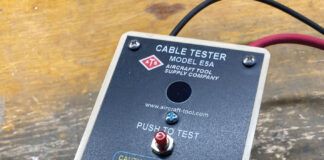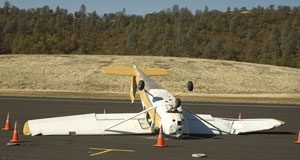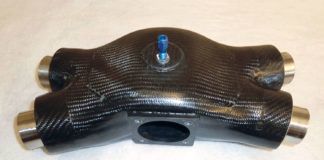Last month we did a little talking about why we needed a good, reliable, sturdy portable antenna. This month we will go into the construction details.
First, a bit of engineering physics. Ask most people what the best conductor in the world is, and odds are they will say gold. Thats because all the high-quality stuff you see is gold-plated. But fact of the matter is that silver is the best conductor known to man. Then copper, then gold and so on. If we assign silver a rating of 100% (but we all know that nothing is perfect, right?) then copper comes in next at about 95%, gold at about 65%, aluminum at 58%, nickel at 20% and things just get much worse from there.
Why gold for our quality parts? Because silver tarnishes (black silver sulfide) and copper turns green (copper sulfate and carbonate) over time. Gold does neither. If we don’t want tarnish or green copper, we plate over the good conductor (copper or silver) with nonreactive gold.
So if we wanted the absolute best material we could lay hands on, wed pick silver. Unfortunately, most of the world is built on the copper standard, and silver antenna elements are what we call unobtanium.
Well use copper. But copper what? Solid copper is hard to come by. Copper tubing (gas lines, refrigeration, etc.) is a little easier to lay hands on, but its heavy and for our use a little difficult to work with. Copper wire is easy to find, but for reasons you can see in the next paragraph not the material of choice. However, thin copper tape is relatively easy to find (just Google it) and works well. But it doesn’t have much body (it flaps around a bit), and wed like it to have some decent shape.
Shape. Fatness. Fatness in antennas is generally good. Why? Because with fatness comes bandwidth. A hair-fine wire might have a working bandwidth of perhaps one megahertz in the aircraft band. That is, if you are precise in your measurements and cut the antenna for exactly 123.0 MHz, it will be good (a purely subjective term) from 122.5 to 123.5 MHz. Not exactly a winner. However, half-inch wide copper tape wrapped along and around a quarter-inch diameter lightweight wood dowel will give us good bandwidth all the way from the bottom end of the com band at 118 MHz to the top end 137 MHz.
This is going to be a dipole (di = two, pole = element) or a two-element antenna. A dipole is two conductors with a small gap in the middle, with both elements fed out of phase. Don’t worry about it. The problem resolves itself as to how long to make the conductors. Simple, a quarter wave compensated for fatness. Huh?
Going the Distance
Whats a wavelength? A wavelength is how far (distance) a single wave of energy travels in 1 second. We know that radio energy travels at the speed of light, so it ought to be pretty simple to figure out how far a wave that vibrates so many times a second goes in 1 second. 123 MHz, translated, means that 123 million cycles per second is the generated frequency. Given that light travels 186,000 miles a second, we ought to be able to work out how many inches that is and come up with a number. The number I come up with is 11,811 million inches a second. Divided by 123 millions cycles a second comes up with a wavelength of about 96 inches. Whats a quarter wave? 96/4 or 24 inches.
Now compensate for fatness. We leave the world of theory and enter into the world of experimental engineering. Over the years, we’ve found that half-inch copper tape has a shortening factor of about 10%, so now our compensated quarter wave in copper tape is 21.6 inches. Each element of the dipole can be made out of copper tape about 21.5 inches long.
Mechanically? Stretch the tape out over a quarter-inch diameter wood dowel about an inch longer than the two dipole ears, and you will cut that 4-foot dowel from the hardware store to about 44.25 inches long. Leave a quarter-inch gap in the dead center of the dowel and string the copper tape out away from center to the ends. Burnish the tape to the dowel as shown.
Go back four paragraphs. Fed out of phase now comes into play. There are several ways of accomplishing this same task, but the easiest and cheapest is to use a coaxial cable balun (rhymes with Alan). Without belaboring the task, a simple mechanical explanation is that the coax goes up to the antenna, makes a U-turn and comes back down along the coax, a quarter wave. This quarter wave, because now we aren’t talking about air covering our quarter wave, but rather the polyethylene insulating dielectric between the braid and center conductor of the coax, is going to be a different length than our antenna elements. What is the factor? Briefly, 0.66 of a full quarter wave, or about 16 inches. (All right, for you theory freaks, it is 1/sqrt (e), where e is the dielectric constant (2.3) of polyethylene).
Abracadabra
Now comes the magic part. At the top where the coax made a U-turn, remove about 1 inch (a half inch each side of center) of the black outer sheath. Carefully cut the braid all the way around the dielectric and unbraid each side. Twist those tiny braid wires together on each side, and quickly solder the braid wires on each side into a pigtail. Down the coax 16 inches, remove about a quarter inch of the black sheath from the open end of the coax and a corresponding quarter inch of the sheath from the main line or long coax going to the radio. Solder these two braids together quickly so that the inner polyethylene melts as little as possible. Note that the center conductor of the quarter wave section of coax is not connected anywhere. I told you it was magic, didn’t I? (Google Willmar Roberts balun to demystify this little gem.)
Now solder one of the braids at the top of the balun to one of the copper elements and one to the other element (it does not matter which one goes where). It is a lot easier if you fasten the polyethylene dielectric at the top of the balun to the dowel with a tie-wrap as shown before you start soldering.
Note that I did not solder the braid to the element at the dead end of the element. Soldering it down the element about a quarter inch does wonders for the mechanical strength of the copper-tape-to-dowel interface.
Thats it for this month, folks. You now have one of the best ground station antennas that can be built, and all for less than a familys worth of Happy Meals.
Where to go from here? Wow. We haven’t talked intercoms in a while, so why don’t we do an el-cheapo intercom that lets you use your expensive com radio as the amplifier part (and the transmit-receive switching part), and we will just make a little box as an adapter to that. From there? Heaven knows. And She isn’t telling.













